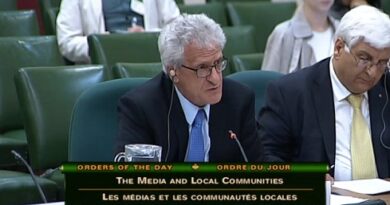Immigration: source of internecine warfare in Cabinet
TORONTO – Special alert to readers: ironically, virtually everyone who reads this is an immigrant, child or grandchild of one. As “invasive species” in Nature, we may not be indigenous to the environment, but we are making it what it is becoming.
Like it or not, that environment is now “ours”, and consequently “ours” to manage, nurture, protect and promote. Pre-conceptions of the fundamentals of economic and socio/cultural drivers in our public policy need to be re-charged. As per Immigration Refugees and Citizenship Canada (IRCC), circa eight million residents (about 23% of the population) is classified as [recent] immigrant. By 2032, 100% of demographic growth, it says, will be attributable to immigration.
An examination of the Annual Report(s) to Parliament, especially in the 2020-2023 period, is likely to cloud the required clarity of purpose and direction for sound Canadian Immigration directions. One is left with the impression that the process has become “rudderless”; that abuses have been normalized and that the ‘maintenance of the immigration industry’ has become a goal unto itself.
What can regular citizens do when successive ministers dedicate their energies to critiquing their predecessor colleagues and undermine the validity of their “accomplishments” in the process? Two topics du jour scream out for attention and solution, not because we say so but because both the immediate past minister and the incumbent say as much.
As per graphic from IRCC, 2022, the department had identified 550,187 holders of international study permits (the current number is higher if one adds those already issued for 2023). The former minister would have issued most of them. It is a big business! His colleague, the current minister, says people are “gaming the system” – using it for personal profit.
There are at least four profit centers for the student visa industry, with potential “gamers” every step of the way. In no particular order, what follows are the numbers and the dollars associated.
First, the tuition accruing to the educational institution, depending on the level (primary, secondary, college, university etc.) will range from $9,500 to $36,000 per annum; private organizations typically charge more. Second, housing costs per student (without meals) will reflect the doing rate of approximately $1,500 monthly, depending on location. Third, recruitment costs, referral fees and financing costs will invariably add to that amount, as will food costs and transportation.
In sum, the expectation of families of International students is that each will spend about $50,000 per year. Multiply that sum by the number of students above and the total is an impressive $27.6 Billion injection into the economy, about $5 billion for every 100,000 students.
It does not end there. Somewhere along the line, the government thought it appropriate to allow Student Visa holders to work legally for 40 hours per week to make ends meet. The abuses have lead to recruiters lapsing into less savory practices.
Suggestions for “easing the pressures” by cutting the numbers have already been met with cries of disaster from the recipients of the quasi-$30 billion injection of cash.
It seems we must “get used to it” – or adapt our social-political structures accordingly. Ditto for our cultural, educational and economic assumptions.
(Part one – to be continued)
Graphic from Annual Report 2023 of IRCC




